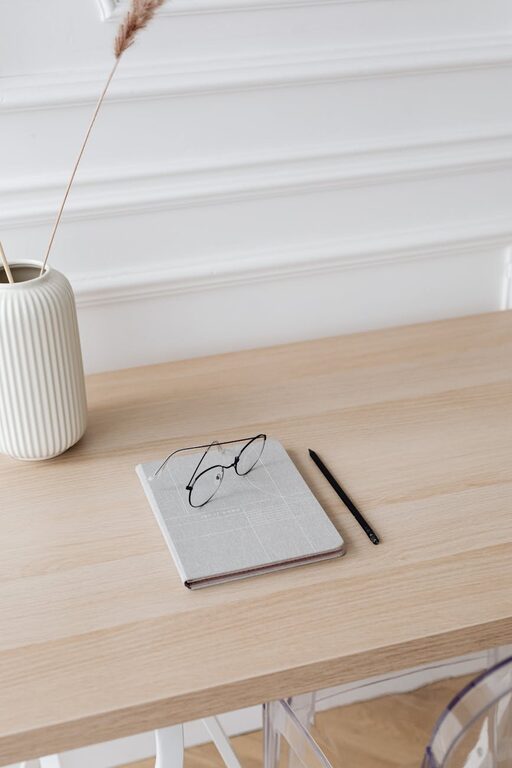Choosing the right notebook can make a big difference in how often you use it and how productive you feel. Whether you want to jot down ideas, plan your day, or keep a journal, the perfect notebook is one that fits your personal style and needs. In this post, we’ll guide you through everything you should consider to pick a notebook you’ll actually use.
Why Choosing the Right Notebook Matters
A notebook isn’t just a collection of blank pages—it’s a tool that can inspire creativity, keep you organized, and boost your productivity. If you buy a notebook that doesn’t feel right, you might end up leaving it on your desk unused. Selecting the right one encourages consistent use and makes writing something you look forward to.
Step 1: Identify Your Purpose
Before buying any notebook, ask yourself what you’ll use it for. Some common purposes include:
– Note-taking: During meetings, lectures, or research.
– Journaling: Daily reflections, gratitude, or mood tracking.
– Planning: To-do lists, goal setting, or calendar tracking.
– Creative writing or drawing: Brainstorming, doodling, or sketching.
– Project tracking: Ideas, deadlines, or progress notes.
Knowing your main use will help determine the size, paper type, and format you need.
Step 2: Consider the Notebook Size
Notebooks come in many sizes, and the one you choose should match your lifestyle and usage habits.
Pocket-sized (A6 or smaller)
– Pros: Portable and easy to carry everywhere.
– Cons: Limited writing space, may feel cramped.
– Best for: Quick notes, on-the-go lists, or short journaling.
Medium-sized (A5)
– Pros: A good balance between portability and ample space.
– Cons: Might be bulky for carrying in small bags.
– Best for: Daily journaling, planning, or general note-taking.
Large-sized (A4 or bigger)
– Pros: Plenty of room for detailed notes and sketches.
– Cons: Less portable, heavier.
– Best for: Detailed project work, art, or extensive journaling.
Step 3: Choose the Paper Type That Works for You
The feel of the paper matters. Here are some common options:
– Lined: Great for writing and keeping notes neat.
– Blank: Ideal for drawing, sketching, or free-form notes.
– Grid/Dot grid: Perfect for bullet journaling, charts, or design layouts.
– Thick or heavyweight paper: Prevents ink bleed-through, preferable if you like using markers or fountain pens.
If you use a specific pen or pencil type, consider testing it on the paper before purchasing a notebook.
Step 4: Decide on the Binding Style
The binding affects how easily the notebook lays flat and its durability.
– Spiral binding: Allows the notebook to fold back on itself, great for note-taking on a small surface.
– Sewn binding: More durable and often opens flat but usually doesn’t fold back.
– Glue binding (perfect bound): Sleek appearance, but less flexible and may lose pages over time.
– Hardcover vs. softcover: Hardcovers protect your notes better, but softcovers are lighter and more flexible.
Look for a binding that suits how and where you’ll use your notebook.
Step 5: Think About Additional Features
Some notebooks come with extra perks that can enhance your writing experience.
– Page numbers: Help with organization and referencing.
– Index or table of contents: Useful for keeping track of notes.
– Elastic closure: Keeps your notebook closed and protected.
– Ribbon marker: Allows you to easily find your last page.
– Pocket: Convenient for storing loose papers or receipts.
– Perforated pages: Easy to tear out notes cleanly.
Decide which features are worth having based on your workflow.
Step 6: Choose a Design You’ll Enjoy
The cover design and overall aesthetics can motivate you to use your notebook.
– Pick a color or pattern that speaks to your personality.
– Consider inspiring quotes or minimalist designs if you prefer simplicity.
– If you dislike writing on a cover you don’t like, you might avoid using the notebook.
Personal connection with your notebook often encourages regular use.
Step 7: Set a Realistic Budget
Notebooks come in a wide price range. High-quality paper and covers can cost more but often provide a better writing experience.
– Decide how much you want to invest—remember, sometimes spending a bit more means you’ll value and use it more.
– Consider purchasing smaller notebooks to start if you’re unsure about which type you’ll stick with.
Step 8: Try Before You Buy (If Possible)
Whenever possible, visit stationery stores to physically touch the notebooks you’re interested in:
– Feel the paper quality.
– Try opening and closing the binding.
– Check the weight and size in your hand or bag.
This hands-on experience can prevent disappointed purchases.
Bonus Tips to Make Your Notebook a Habit
– Keep it visible: Store your notebook where you often work or relax.
– Use it daily: Even a sentence or two keeps the habit alive.
– Customize it: Add stickers, tabs, or personalize your pages to feel more connected.
– Pair it with your favorite pen: Tools you enjoy using increase writing frequency.
Final Thoughts
Choosing a notebook that you’ll actually use involves more than just picking a pretty cover. Consider your needs, daily habits, and preferences carefully. With the right size, paper, binding, and features, your notebook can become an essential companion for creativity, planning, and organization. Take your time selecting, and remember—the perfect notebook is one that inspires you to put pen to paper.
Happy writing!

